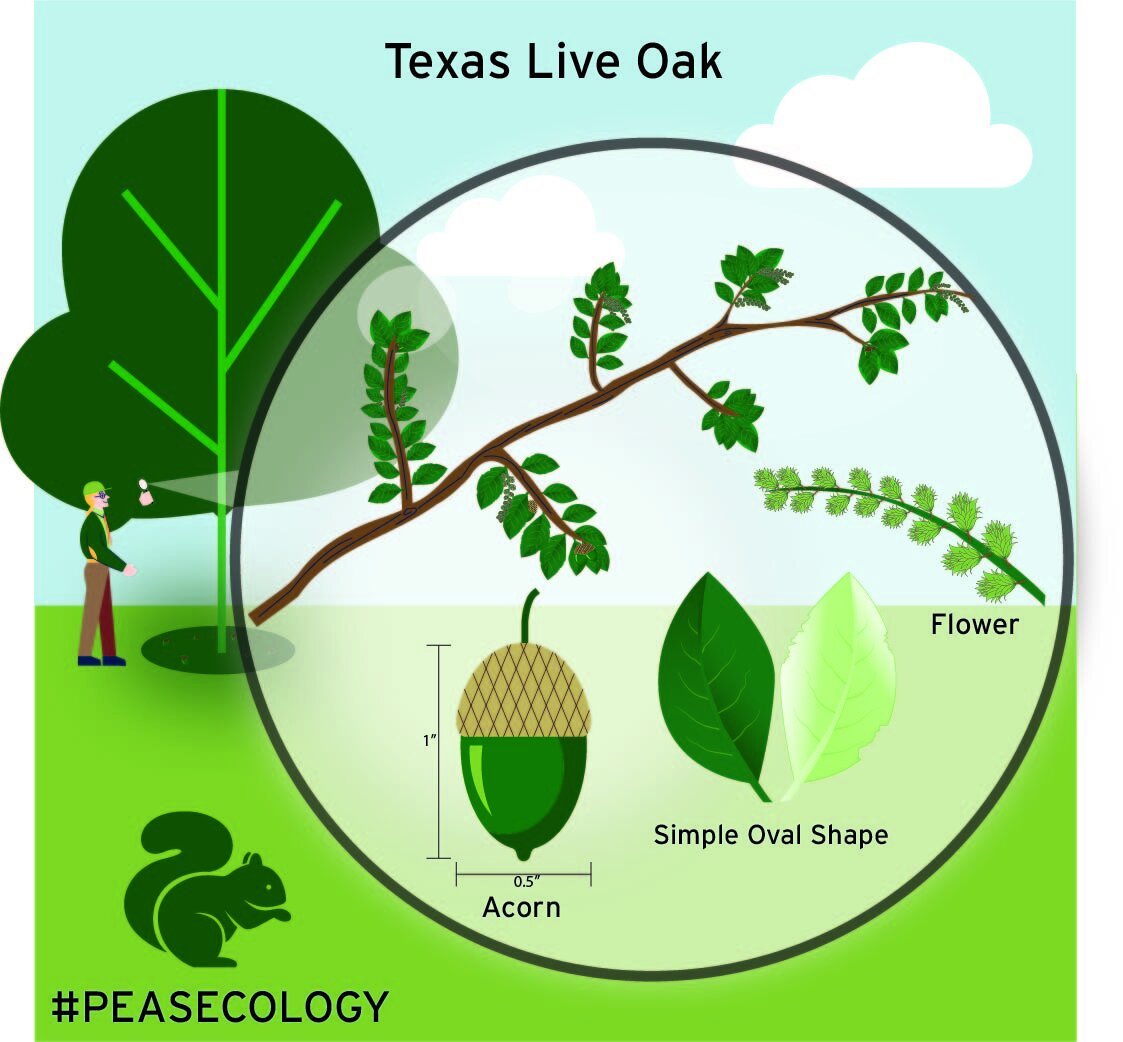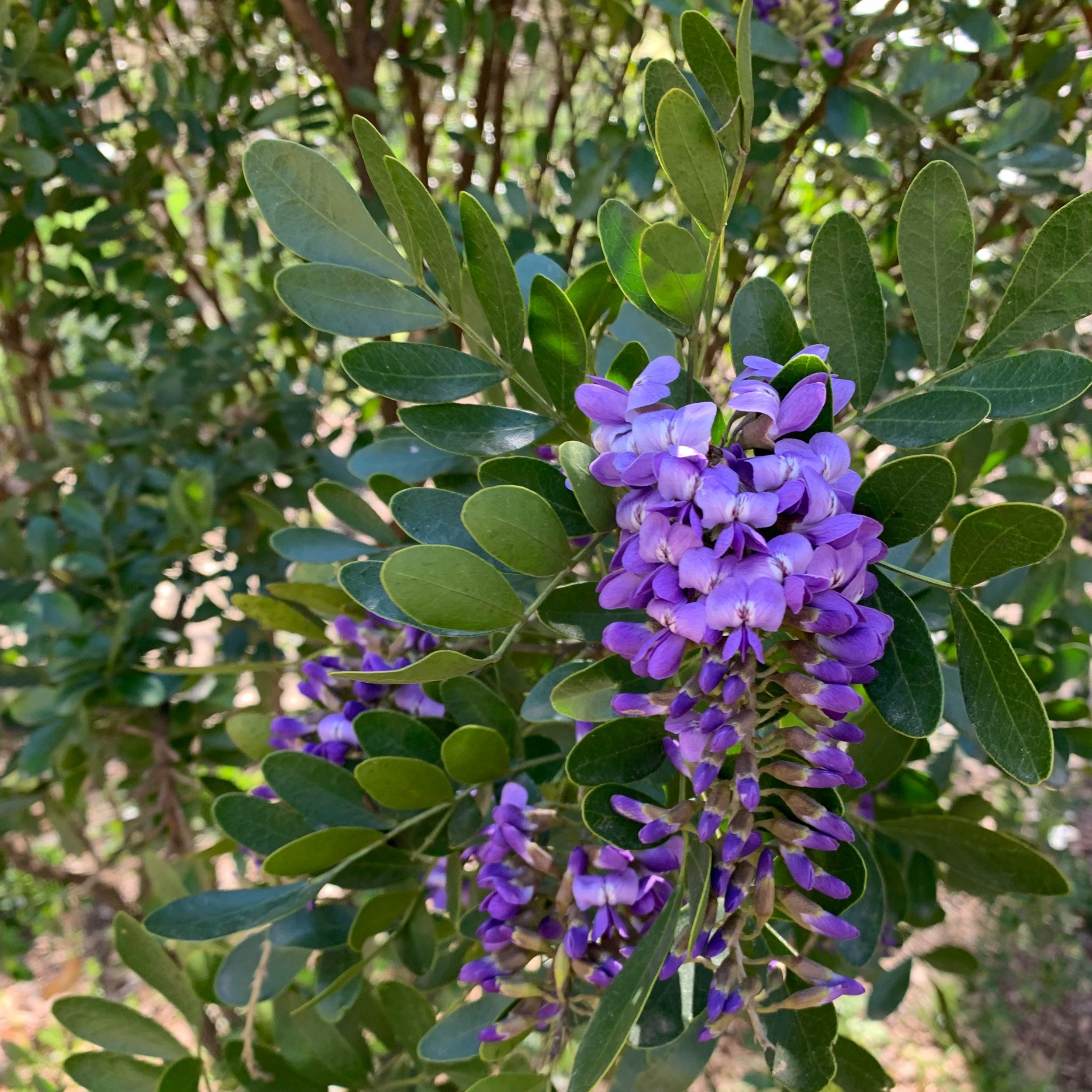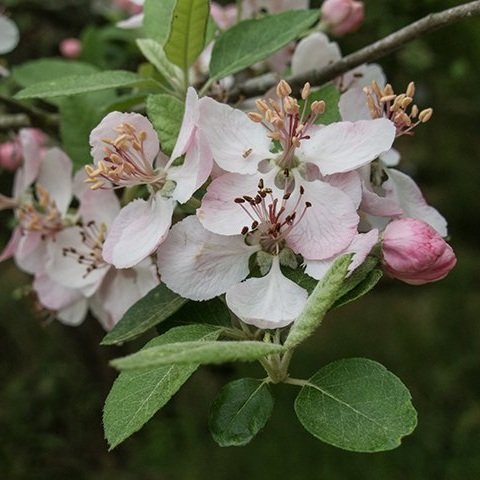Trees
Texas Live Oak
Texas Live Oak trees are commonly found in the range of 25-50 ft tall with a 4 ft trunk in diameter with a low, dense crown that can spread across 100 ft that serves as a good cover under the sun.
It has a simple leaf in an oval shape with dark green above and pale and silvery white beneath.
Its fruit is an acorn about 1” long and 0.5'“ in diameter. The acorn is dark brown and shiny with a gray downy cap about half of its length and it has a long stem.
Borne in March through May, the flowers can be found in catkins or peduncles in the leaf axils.
MEXICAN PLUM
The showy white blooms of Mexican Plum are one of the first signs of spring in Central Texas. As a native, deciduous tree, it is one of the first ornamental trees to bloom in the spring, showcasing beautiful, fragrant, white flowers. Its flowers are highly attractive to bees and other pollinators, as well as eaten by several species of bird. Fruits ripen in autumn and can be used for preserves and cooking, as well as eaten by local birds and mammals. Mexican Plum can be found all across Pease Park, most notably in Live Oak Meadow and Wooten Woods.
Simple alternate leaves are ovate to narrower with serrate margins and grow to 5 inches long and 2 inches wide. Green leaves provide amazing fall color, turning a showy shade of orange.
The fruit is a plum (actually a drupe) that ripens in late summer, 1.25” in diameter, dark purple-red with a bluish “bloom.” It has a smooth stone 0.75” long under the juicy flesh. Fruits are often used to make jams and jellies.
The flowers are white to pink in color and bloom between February and April on bare stems, appearing before the tree’s leaves.
Texas Mountain Laurel
Texas Mountain Laurel (Dermatophyllum secundiflorum) is a drought-tolerant native tree that also commemorates the arrival of spring in Central Texas.
In the spring it can be easily identifiable by its strong and sweet signature scent, which is often compared to artificial grape flavoring.
If the sweet smell is not a giveaway, then the bright purple drooping flowers and lacquer red seeds will tell you you are in the presence of a mountain laurel.
Its seeds are stored in legume-like pods and though they are beautiful, they are are actually quite toxic to humans and animals when ingested.
Blanco Crabapple
The Blanco Crabapple (Malus ioensis var. texana) is a perennial tree with deciduous leaves that can produce pomes in the fall.
This Texas native offers beautiful pink and white blooms in the spring which offer valuable resources to native pollinators like bees. When it fruits its pomes are enjoyed by birds.
The Blanco Crabapple tree can grow up to 30 feet tall, most successfully along limestone slopes and the creeks of the Edwards Plateau as it enjoys moist, well-drained, calcareous soil.
Two of these beauties can be found on the north side of the 24th Street bridge. By planting these at Pease Park we are reintroducing a native and endangered species to our local ecosystem.








